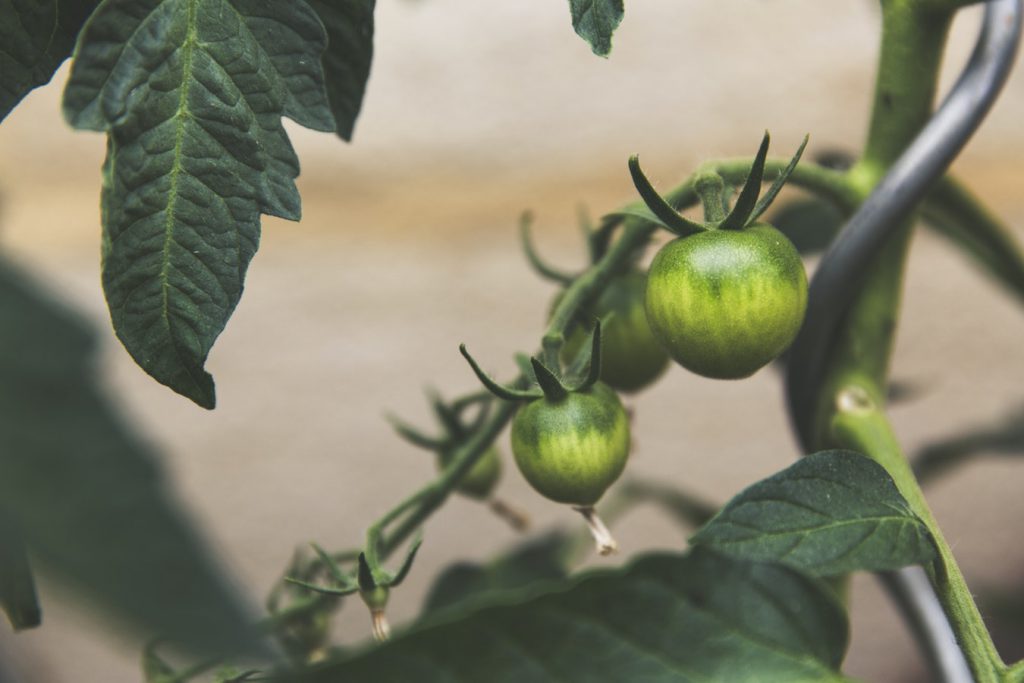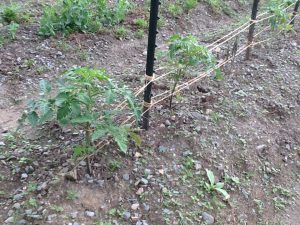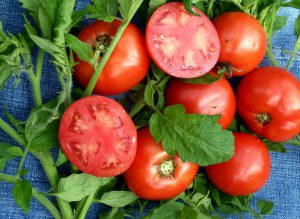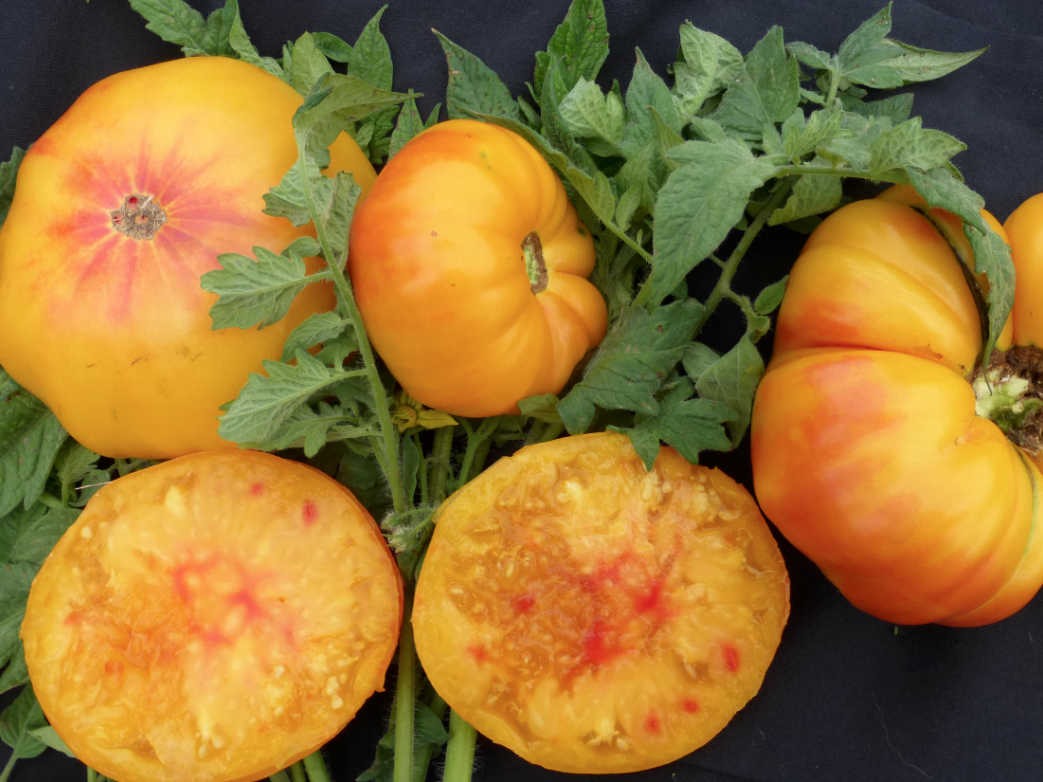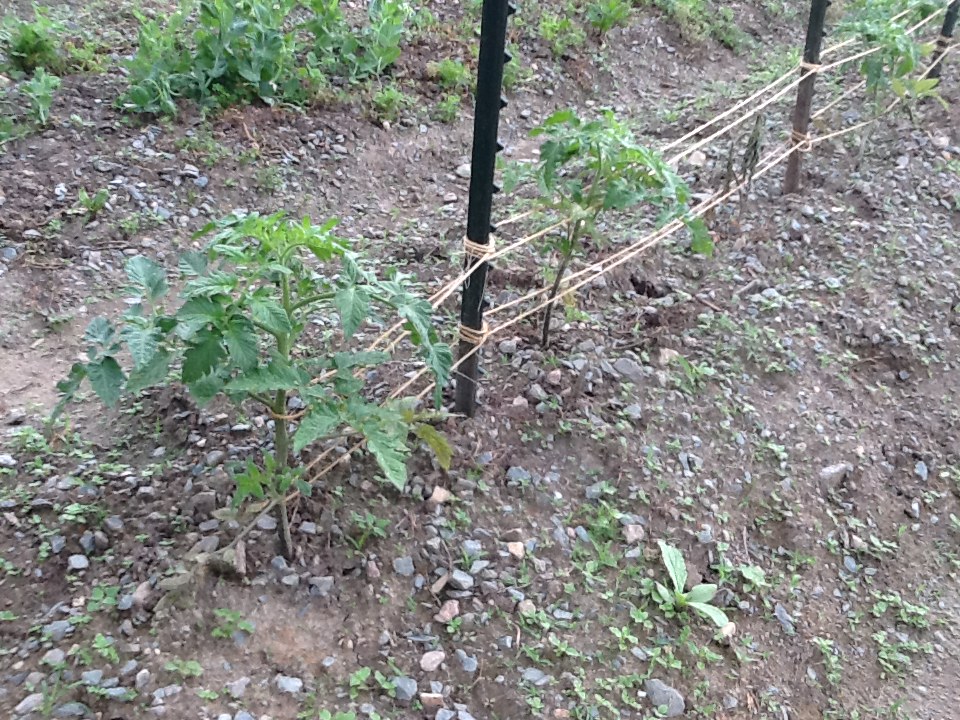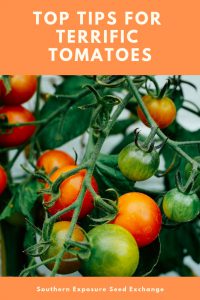Heirloom tomatoes are the superstars of the vegetable garden world. They have endearing stories, gorgeous colors, unique shapes, and a flavor beyond compare. Unfortunately, all that flavor and charm comes with a cost. Heirloom tomatoes can be tricky to grow. Many heirlooms lack resistance to fungal and bacterial diseases and have thin skin that splits and cracks easily.
Despite this, we love them and wouldn’t trade them for all the hybrids in the world. They’re too good to resist. That’s why we’ve put together a list of management techniques to help ensure you have success with heirloom tomatoes.
Protect the Foliage of Heirloom Tomatoes
Many common tomato diseases such as late blight, Alternaria (early blight), Botrytis, and leaf mold, thrive and spread in moist conditions. These fungal diseases produce spores that spread to tomato foliage through wind and water.
In much of the Southeast, where we have hot, humid summers these diseases are prevalent. Thankfully, there are a few ways to shelter your heirloom tomatoes by protecting their foliage.
Mulch
One easy way to protect your foliage is with a thick layer of mulch. This prevents soil splash-back onto the tomato’s foliage even during heavy rain. Plus, mulch helps keep the soil moist and prevents weeds.
You don’t need anything fancy. Straw, grass clippings, old leaves, and wood chips all work. For extra weed suppression, place your mulch over a layer of cardboard or newspaper.
In cooler climates, you may need to wait until the soil has fully warmed to apply mulch. Mulching too early can prevent soil warming and reduce early growth.
Hoophouses
While not available to everyone, hoop houses are one of the best ways to prevent these wind and water-borne diseases. They keep the foliage dry all season and help block wind-borne spores.
Keep in mind that most heirloom varieties are large, indeterminate tomatoes. You’ll need a tall tunnel and a good trellising system.

Use Drip Irrigation, Hand Watering, or Soaker Hoses for Heirloom Tomatoes
Watering methods like drip irrigation or soaker hoses are preferable to overhead watering for heirloom tomatoes. These methods water the base of the plant, keep the foliage dry, and prevent soil splash-back.
If you only have a few plants and these methods aren’t accessible, watering the base of the plant by hand with a hose or watering can is also effective. Avoid using a hard spray which could splash soil onto the leaves.
Space Heirloom Tomatoes Generously
Improving air circulation can greatly reduce disease pressure in tomato plants. While some growers may plant tomatoes as close as one foot, we recommend planting heirlooms at least 2 feet apart in rows 60 inches apart.
Trellis and Prune Heirloom Tomatoes
Proper pruning and trellising are other key ways to improve airflow and reduce disease pressure. Most heirloom tomatoes are vigorous, indeterminate plants that require sturdy trellises and more frequent pruning.
Good trellis options include large homemade cages, the Florida weave method, tall stakes, or string systems in hoop houses.
Several common trellising methods are easiest when you prune the plants to a single leader. Pruning to remove suckers also allows more airflow and can encourage good production.
Learn more about proper pruning here.

Learn to Identify Common Diseases
Learning to spot common diseases can help you catch problems quickly and take the appropriate steps. If you buy in plants, it may also help you spot signs of disease before you bring it into your garden.
Cornell University has an excellent Tomato Diagnostic Key for identifying diseases.
If your tomato has a fungal disease like late blight, removing and destroying affected foliage and plants can help slow the spread.
Some growers, particularly commercial growers may also consider using organic fungicides. Like any treatment, they have downsides and should be carefully researched and applied.
Johnny’s Selected Seeds has a handy chart of organic treatments for pest and disease issues.
Learn to Spot Nutritional Deficiencies
The issue with nutritional issues is twofold. First many nutrient issues are easy to mistake for disease issues. Before you go spraying fungicide, make sure that the yellowing you’re seeing isn’t just a nutrient deficiency.
The second issue is that nutrient deficiencies stress the plant which can make it more susceptible to disease in the future. Just like you have a stronger immune system when you eat well and get enough sleep, your plant will fight off diseases better when it’s well cared for and nourished.
Here are common nutrient deficiencies we see in all plants and how to correct them.
Manage Water Carefully
Heirloom tomatoes thrive with consistently moist, but not waterlogged soil. Their thin skin means that large fluctuations in moisture can lead to splitting.
Too little water can also cause issues like blossom end rot. While this disease is caused by a lack of calcium, often the root cause is a lack of water. When the soil is too dry, the plant can’t take up enough calcium, even if it is present in the soil in sufficient quantities.
Overwatering can also dilute the flavor of tomatoes and contribute to disease issues.
When determining whether you need to water, dig down a couple of inches and feel the soil. It should be moist but not so wet you can squeeze water out of it.
Purchasing a cheap moisture meter can simplify this process and help remove any doubts about when to water.
Rotate Crops by Family
Many diseases that plague heirloom tomatoes are soil-borne, so proper rotation is critical. We recommend rotating your crops on a four-year cycle. For commercial growers, adding a year in cover crops is also a good idea.
When rotating crops, do so by family, not just species. For example, don’t rotate just tomatoes. Rotate the nightshade or Solanaceae family including tomatoes, peppers, tomatillos, ground cherries, eggplants, and potatoes.

Select a Variety Wisely
Each heirloom variety we carry has its own unique set of strengths and weaknesses. A few carry resistance to specific diseases. You’ll find their disease resistance listed in parentheses after the variety name.
For example, the Abraham Lincoln (Early Abe Lincoln) Tomato has (ab, asc) next to its name. This indicates that it’s resistant to Alternaria (early blight) and Alternaria stem canker.
See our full key to tomato disease tolerance.
Note that many heirloom tomatoes have not been extensively tested for disease tolerance either in the laboratory or in extensive field trials. The absence of disease resistance information in the variety description does not imply a lack of resistance.
You can also consider heirloom cherry and paste tomatoes. These usually display more disease resistance than large, slicing tomatoes.
If all else fails, we carry many disease-resistant, open-pollinated varieties. While they may not be considered heirlooms yet, they still have delicious flavor. By saving seed from one of these varieties, you can help create a legacy for one of these newer varieties.


